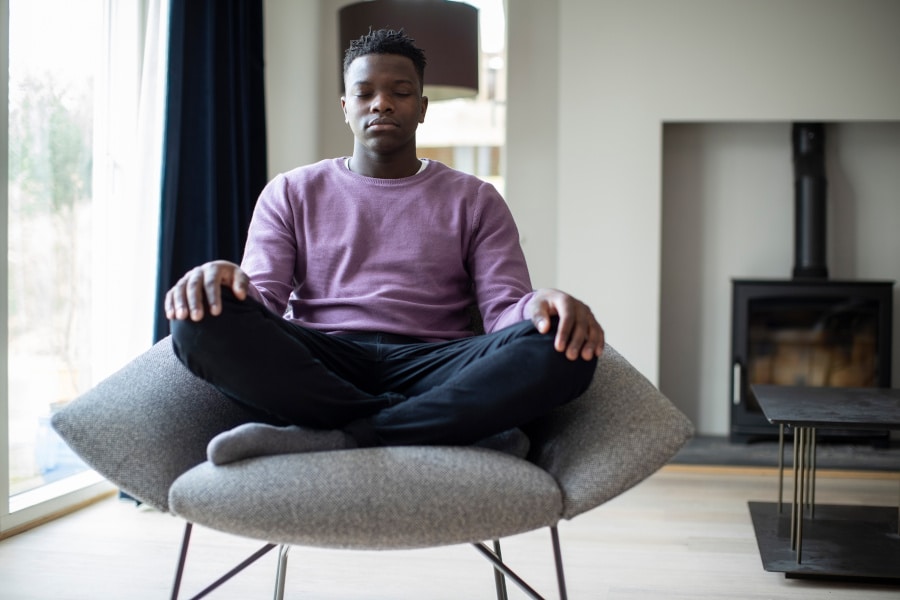 Are there ways to treat borderline personality disorder (BPD) at home? It’s a valid question to ask. With the rise of the at-home self-help movement, many people wonder which conditions they can treat properly at home. Does BPD fall within the list of disorders for which at-home care is appropriate?
Are there ways to treat borderline personality disorder (BPD) at home? It’s a valid question to ask. With the rise of the at-home self-help movement, many people wonder which conditions they can treat properly at home. Does BPD fall within the list of disorders for which at-home care is appropriate?
How to Treat Borderline Personality Disorder at Home
Social media provides a massive platform for dozens of individuals promoting the healing benefits of self-help treatment approaches. Brightly-colored images emblazoned with supportive and encouraging messages fill newsfeeds on a variety of platforms. The push for greater self-awareness has people wondering whether they can find healing at home.
Are you wondering whether you can treat borderline personality disorder at home? Maybe you’ve seen some helpful ideas online that seem like they could help. Are they enough to provide the extent of treatment you need to manage your BPD, though?
For More Information About our Women’s BPD Treatment Center
Call (855) 409-0204 Now
Does Your BPD Condition Qualify for At-Home Treatment?
Clinicians once considered borderline personality disorder an untreatable mental illness. Thankfully their understanding has shifted over time and there are now helpful treatments for managing symptoms of BPD. Can you take these newfound methods and learn to manage your symptoms at home?
Every individual is different. What works for someone won’t always work for another person. While it’s a great idea to invite awareness of your mental wellbeing into your life, treating disorders at home isn’t always the safest idea. Some people even use resources online to self-diagnose without ever seeking a professional assessment.
It’s not a good idea to try to treat borderline personality disorder at home before seeking professional help. BPD is a serious condition that leads people to make hasty decisions without always considering every outcome. You don’t want to put yourself at risk by taking treatment into your own hands from the very beginning.
It’s a different story if you’ve had a BPD diagnosis for some time, though, and been through a comprehensive treatment program. You’ve spent time in individual and maybe even group therapy receiving the professional insight and advice from trained clinicians. Developing an at-home treatment plan as a follow-up to a certified program is a fantastic idea.
Discovering Helpful Approaches
You have some ideas about helpful techniques for managing BPD if you have attended a program before. They taught you more about the disorder and how to manage your symptoms while living a normal life. Take these skills you learned in your borderline personality disorder treatment program and combine them with some at-home approaches.
There are a variety of things you can include to supplement the coping skills learned in a treatment program. Exercise and the foods you eat are two important components that contribute to the wellbeing of your mind and body. The following are a few helpful ways you can add in to treat your borderline personality disorder at home.
Affirmation Cards
The way you feel about yourself and the actions you take start with your thoughts. You talk to yourself all day long whether you’re paying attention to those thoughts or not. If you’re regularly feeding into a negative inner dialogue, it plays a role in your self-esteem and the way you carry yourself. It’s important to work on rewiring this dialogue!
Daily positive affirmations are a helpful practice to use when trying to treat borderline personality disorder at home. If you don’t already incorporate affirmations into your day, though, it can be confusing and intimidating when you first start out.
Buying a deck of affirmation cards can be a great place to start. Affirmation cards are a premade, decorative deck of cards with positive affirmations printed on them. Select a card from your deck in the morning and, if it resonates with you, spend a few minutes using the phrase to set your intention for the day.
There is no limit to the number of things you can use affirmation cards for either. Another way fun way to work with affirmation cards is to sort through the deck and select a few that stick out to you. Spend some time creating a collage with the affirmation cards, including cutouts from magazines or quotes you enjoy.
Nutrition
Thousands of studies reveal the close relationship between the foods you eat and your mood. This doesn’t mean you need to eat a salad for every meal. It does mean that you should be mindful of the food you use to nourish your body, though. Food is fuel, after all.
When thinking about your nutrition, consider the kinds of foods you eat regularly. If you eat processed foods tends to result in impaired brain function. For example, many studies reveal the correlation between mood disorders and diets that are high in refined sugar.
On the other hand, the body usually responds better to a diet centered mainly around quality nutrition. Whole foods contain more vitamins, minerals, and antioxidants that nourish your brain and body. Centering most of your food intake around whole foods is the healthiest approach.
When trying to treat borderline personality disorder at home, take time to consider which foods you eat most often. If the majority of the food you eat is processed, it might be a good idea to adjust some of your eating habits. Try incorporating the 80/20 rule for a helpful place to start. This means 80 percent of the time you consume whole, nutritious foods and 20 percent of the time you can be more lenient with what you eat.
Exercise
Exercise is another great way to improve your overall mental health and treat your borderline personality disorder at home. Similar to diet, plenty of people overestimate what exercise looks like. It doesn’t have to consist of training for a half marathon or lifting heavy barbells at the gym!
Plenty of research shows the myriad mental health benefits associated with a wide variety of aerobic exercises. Walking, jogging, cycling, swimming, dancing, and even gardening are shown to reduce levels of anxiety and depression. Don’t overthink it! Exercise is far more accessible than most people assume it to be.
If you’re trying to incorporate supplemental ways to treat borderline personality disorder at home, include exercise on your list. Find a few ways you enjoy getting outside and moving around, whether it’s a walk around your block or swimming a few laps in your community pool. Exercise doesn’t have to be a chore!
Benefits of Inpatient and Outpatient BPD Treatment
If you’re concerned about your BPD symptoms, it’s best to seek professional assessment before trying to treat borderline personality disorder at home. You have numerous program options including residential, day treatment, or an outpatient program.
It’s safest to first lay down the groundwork with the help of a comprehensive mental health treatment program. You’ll gain an understanding of BPD in general as well as your specific symptoms and struggles.
Are you interested in learning more about programs to treat borderline personality disorder? Clearview Women’s Center is an incredible option specializing in BPD and other mental health disorders. Call us and speak with one of our knowledgeable admissions counselors to find out you can get the help you need today! Please contact us at (855) 409-0204 or submit the form below and a treatment specialist will contact you.





